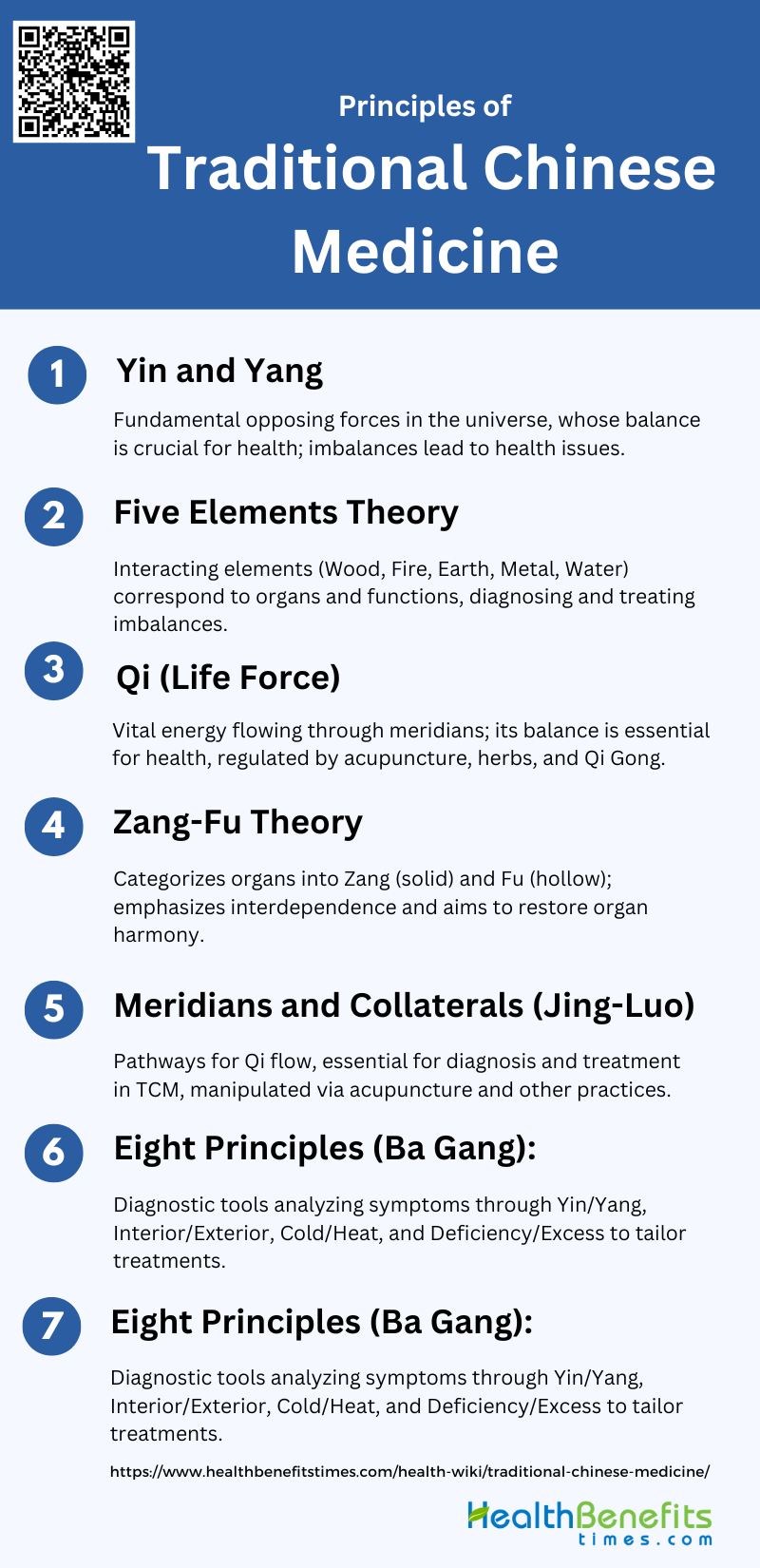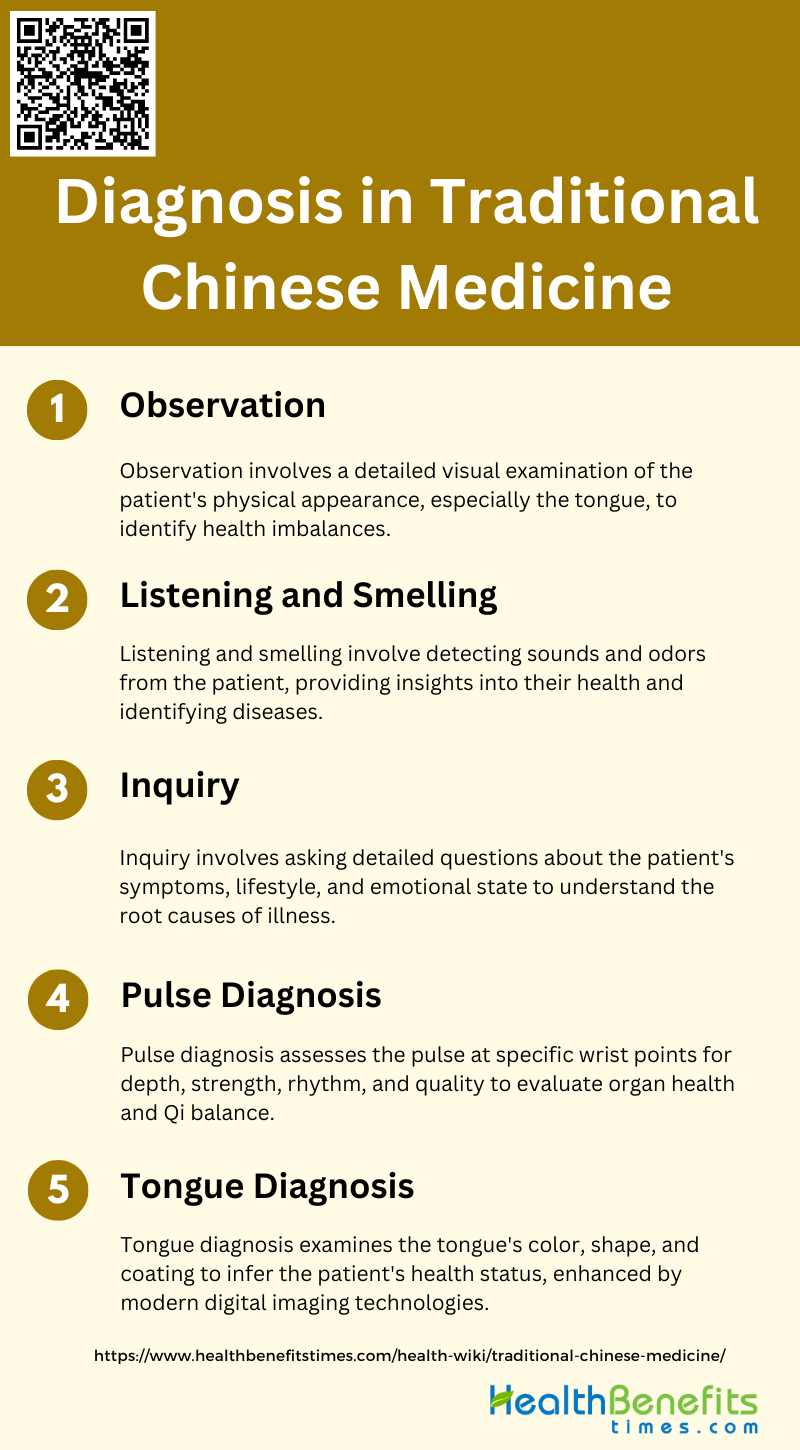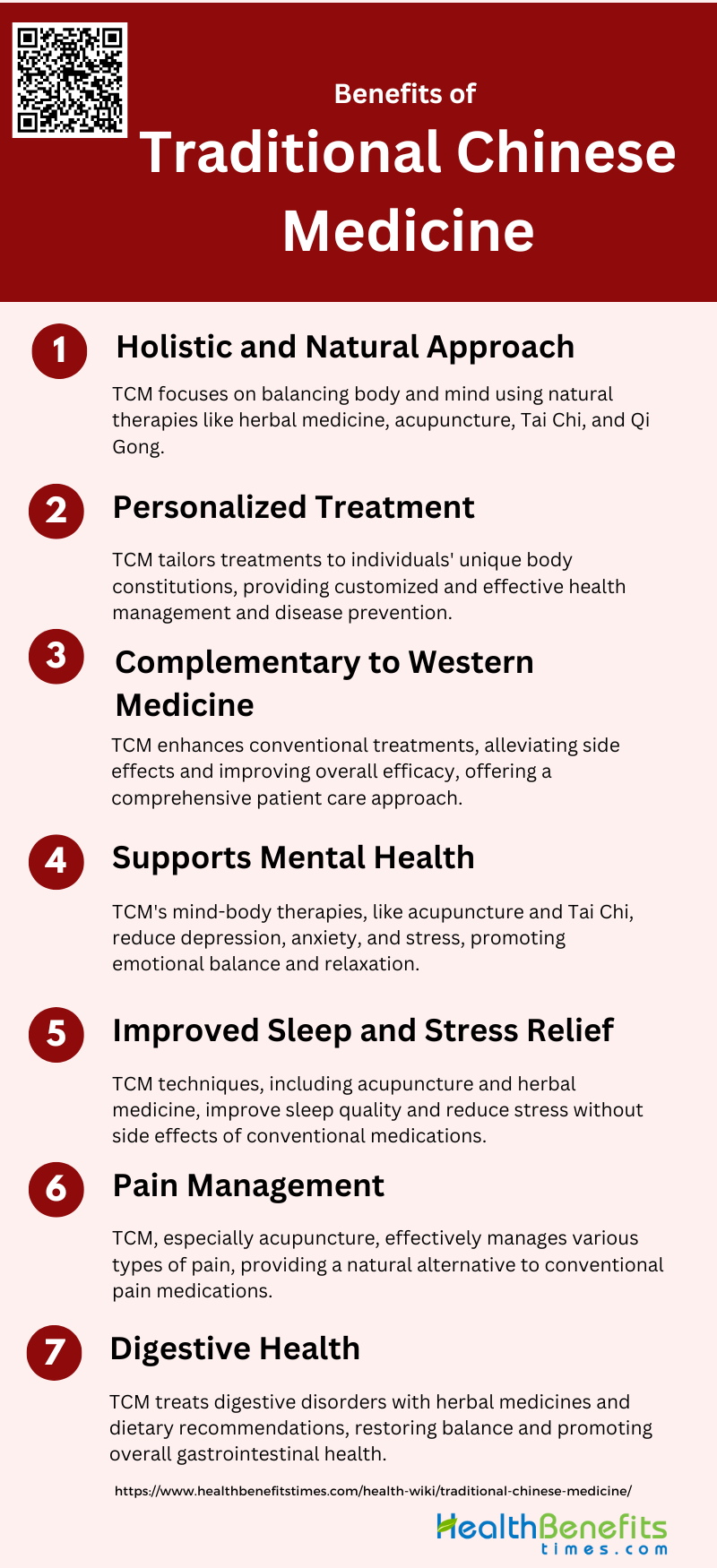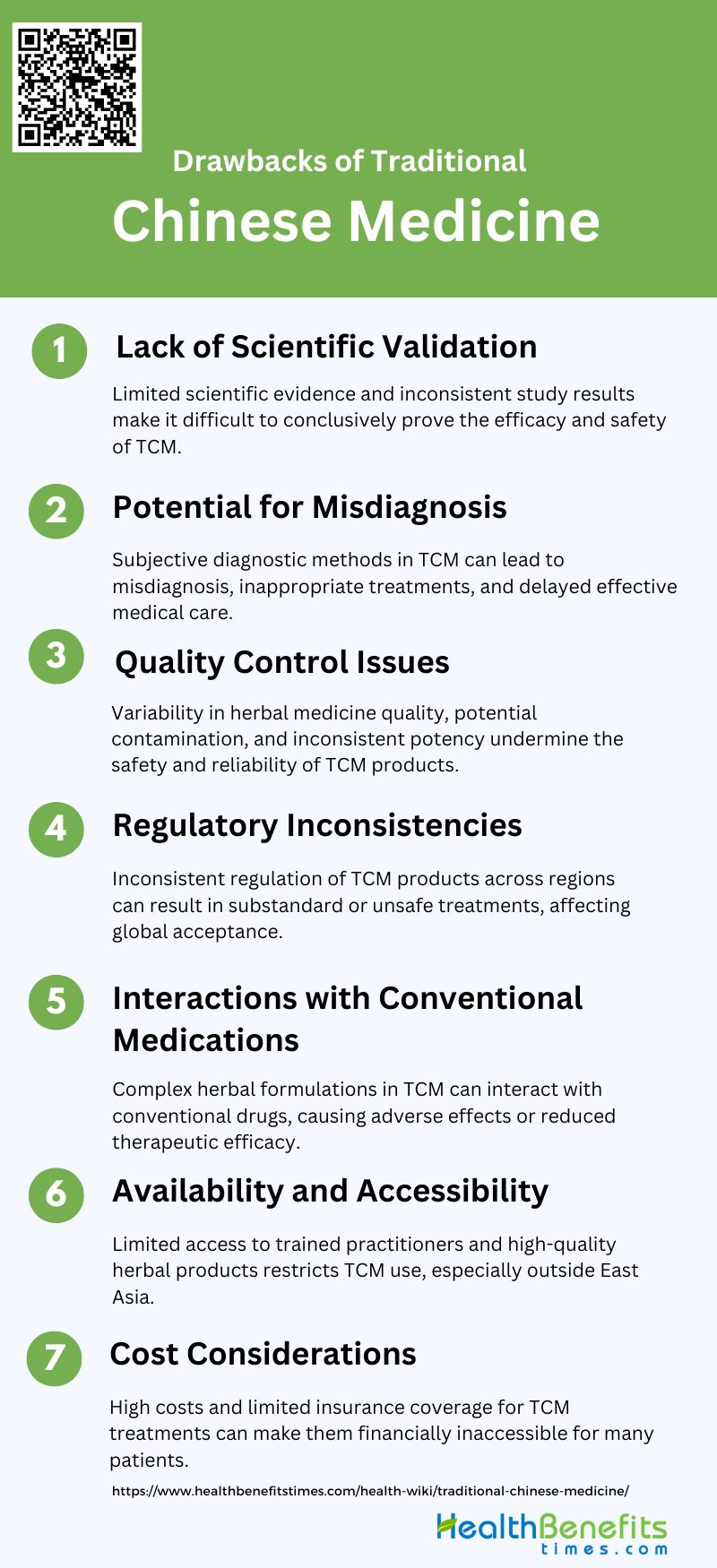Traditional Chinese Medicine (TCM) is a holistic medical system that has evolved over thousands of years, integrating various practices such as herbal medicine, acupuncture, dietary therapy, and physical exercises like Tai Chi and Qigong. Rooted in ancient Chinese philosophy, TCM emphasizes the balance of yin and yang and the flow of Qi (vital energy) through the body’s meridians to maintain health and treat diseases. It operates on the principle that the human body is a microcosm of the universe, and health is achieved by harmonizing the body’s internal environment with the external world. Traditional chine medicine has been increasingly recognized for its potential in managing chronic conditions such as obesity, diabetes, cardiovascular diseases, and cancer by regulating bodily functions, enhancing immune response, and restoring homeostasis through natural and multi-targeted approaches.
History of Traditional Chinese Medicine
Traditional Chinese Medicine (TCM) has a rich history that spans several millennia, deeply rooted in the cultural and philosophical traditions of China. The origins of TCM can be traced back to ancient texts such as “The Yellow Emperor’s Manual of Corporeal Medicine,” which dates to the 2nd century BC and discusses practices like acupuncture and moxibustion. The foundational principles of TCM, including the balance of yin and yang, were first articulated in the “Internal Classic of Yellow Emperor”. Over the centuries, TCM has evolved, incorporating a vast array of herbal medicines, animal products, and minerals, as documented in early works like Shen Nong’s Herbal. The practice of TCM has not only persisted but also adapted to modern medical paradigms, contributing significantly to contemporary pharmacology with discoveries such as artemisinin for malaria treatment. Despite the advent of Western medicine, TCM remains a vital part of healthcare in China and beyond, offering unique therapeutic approaches and insights into disease prevention and health maintenance.
Principles of Traditional Chinese Medicine
Traditional Chinese Medicine (TCM) is a holistic approach to health that has been practiced for thousands of years. It is based on the belief that the body’s vital energy, or Qi, flows through pathways called meridians and that maintaining balance and harmony within the body is essential for health. The following principles form the foundation of TCM:
1. Yin and Yang
Yin and Yang are fundamental concepts in Traditional Chinese Medicine (TCM) representing opposite but complementary forces in the universe. Yin is associated with qualities such as cold, darkness, and passivity, while Yang represents heat, light, and activity. The balance between Yin and Yang is crucial for maintaining health. Imbalances can lead to various health issues, and TCM aims to restore this balance through various treatments such as acupuncture, herbal medicine, and dietary adjustments.
2. Five Elements Theory
The Five Elements Theory in TCM includes Wood, Fire, Earth, Metal, and Water. These elements are believed to interact with each other and correspond to different organs and bodily functions. For instance, the liver is associated with Wood, and the heart with Fire. The theory is used to diagnose and treat illnesses by understanding the relationships and imbalances among these elements. It provides a framework for understanding the body’s complex interactions and is integral to various TCM practices.
3. Qi (Life Force)
Qi, often translated as “life force” or “vital energy,” is a central concept in TCM. It is believed to flow through the body along pathways called meridians. Qi is essential for maintaining health, and its imbalance or blockage can lead to disease. TCM treatments such as acupuncture, herbal medicine, and Qi Gong aim to regulate and harmonize the flow of Qi to restore health. The concept of Qi also extends to the understanding of various physiological and psychological functions.
4. Zang-Fu Theory
Zang-Fu Theory categorizes the body’s organs into Zang (solid) and Fu (hollow) organs. Zang organs include the heart, liver, spleen, lungs, and kidneys, while Fu organs include the stomach, intestines, and bladder. This theory emphasizes the interdependence and interaction between these organs. Each organ is associated with specific functions and elements, and imbalances can lead to various health issues. TCM treatments aim to restore harmony among the Zang-Fu organs to maintain overall health.
5. Meridians and Collaterals (Jing-Luo)
Meridians and collaterals, known as Jing-Luo, are pathways through which Qi flows in the body. There are twelve primary meridians corresponding to the major organs and several secondary pathways. These meridians are used in acupuncture and other TCM practices to diagnose and treat illnesses by manipulating the flow of Qi. The concept of meridians does not correspond to any anatomical structures recognized by Western medicine but is crucial in TCM for understanding the body’s energy flow.
6. Eight Principles (Ba Gang)
The Eight Principles, or Ba Gang, are diagnostic tools used in TCM to understand the nature of a patient’s condition. These principles include Yin/Yang, Interior/Exterior, Cold/Heat, and Deficiency/Excess. By analyzing symptoms through these principles, practitioners can determine the underlying imbalances and tailor treatments accordingly. This holistic approach allows for a comprehensive understanding of the patient’s health and guides the selection of appropriate therapies.
7. Diagnostic Methods
TCM employs various diagnostic methods to assess a patient’s health, including observation, listening and smelling, inquiry, and palpation. These methods help practitioners gather information about the patient’s condition and identify imbalances in Qi, blood, and bodily fluids. Techniques such as tongue examination and pulse diagnosis are unique to TCM and provide insights into the patient’s overall health. These diagnostic methods are integral to developing personalized treatment plans.
Practices in Traditional Chinese Medicine
Traditional Chinese Medicine (TCM) encompasses a variety of practices aimed at maintaining health and treating illness by balancing the body’s energy (Qi) and harmonizing bodily functions. Here are some key practices in TCM:
1. Acupuncture
Acupuncture is a key component of Traditional Chinese Medicine (TCM) that involves inserting fine needles into specific points on the body to balance the flow of energy or “qi” through meridians. It has been shown to alleviate various symptoms, including pain, fatigue, and gastrointestinal discomfort, particularly in cancer patients. Acupuncture is also effective in reducing blood pressure when combined with antihypertensive drugs. Additionally, it has demonstrated efficacy in managing chronic neck and low back pain. Modern techniques, such as laser and low-voltage electricity, are also being explored to stimulate acupuncture points.
2. Herbal Medicine
Chinese herbal medicine is another cornerstone of TCM, often used to treat a wide range of conditions, including cancer-related symptoms and the side effects of conventional cancer treatments. Commonly used herbs include Panax ginseng, Astragali radix, and various herbal formulas like Bu-zhong-yi-qi-tang. These herbs can alleviate gastrointestinal issues, reduce bone marrow suppression, and protect against chemotherapy-induced neuropathy. Herbal medicine is also integrated into self-care practices outside of Asia, emphasizing lifestyle, diet, and exercise based on TCM diagnosis.
3. Cupping Therapy
Cupping therapy involves placing cups on the skin to create suction, which is believed to improve the flow of qi and blood. It has been found effective in reducing pain and disability associated with chronic neck and low back pain. Cupping is also used in combination with other therapies like acupuncture to enhance its efficacy. Although the quality of evidence varies, cupping is generally considered a safe and beneficial adjunctive therapy for pain management.
4. Tai Chi and Qigong
Tai Chi and Qigong are traditional Chinese exercises that combine physical movement, breathing techniques, and meditation. These practices are widely used for health maintenance and rehabilitation, particularly in improving the quality of life for cancer patients. Tai Chi has been shown to improve vital capacity in breast cancer patients and is recommended for its preventive and therapeutic benefits. Qigong, similarly, is effective in managing hypertension and enhancing overall well-being.
5. Meditation
Meditation in TCM often involves techniques like mindfulness and breathing exercises, which are integral to practices like Qigong and Tai Chi. These techniques help in reducing stress, improving mental clarity, and enhancing emotional stability. Meditation is also recommended for managing hypertension and other cardiovascular conditions. The practice emphasizes the balance of mind and body, contributing to overall health and disease prevention.
6. Moxibustion
Moxibustion involves burning moxa (dried mugwort) near or on the skin to stimulate acupuncture points. It is used to treat various conditions, including allergic rhinitis and chronic pain. Moxibustion is often combined with acupuncture to enhance its therapeutic effects. Studies have shown that it can effectively alleviate symptoms without significant adverse effects, making it a valuable component of TCM.
7. Tui Na (Massage)
Tui Na is a form of Chinese therapeutic massage that involves various techniques to stimulate the flow of qi and blood. It is commonly used for physical rehabilitation and pain management, particularly in conditions like chronic neck and low back pain. Tui Na is also effective in relieving gastrointestinal discomfort and improving overall quality of life in cancer patients. The practice is recognized for its holistic approach, integrating physical and mental health benefits.
Diagnosis in Traditional Chinese Medicine
Diagnosis in Traditional Chinese Medicine (TCM) involves a holistic approach to understanding a patient’s health. TCM practitioners use various methods to identify imbalances in the body and determine the underlying causes of illness. Here are the key diagnostic methods in TCM:
1. Observation
Observation, or “inspection,” is a fundamental diagnostic method in Traditional Chinese Medicine (TCM). It involves a detailed visual examination of the patient’s physical appearance, including their complexion, body shape, and most notably, the tongue. The tongue is considered a mirror of the body’s internal state, reflecting the condition of the organs, meridians, and overall health. For instance, the color, shape, and coating of the tongue can provide insights into various health conditions. Modern advancements have introduced digital tongue-imaging devices to standardize and enhance the accuracy of tongue diagnosis, making it more objective and reliable.
2. Listening and Smelling
Listening and smelling, or “auscultation and olfaction,” are crucial in TCM diagnosis. This method involves listening to the patient’s voice, breathing, and other sounds, as well as detecting any unusual odors emanating from the body. These sensory cues can provide valuable information about the patient’s health. For example, a weak or coarse voice might indicate lung issues, while certain odors can be associated with specific diseases. Integrating acoustic sound indices, such as intensity and pitch, into diagnostic models has been shown to improve the accuracy of TCM diagnoses.
3. Inquiry
Inquiry, or “interrogation,” involves asking the patient detailed questions about their symptoms, lifestyle, medical history, and emotional state. This method helps TCM practitioners gather comprehensive information to understand the root cause of the patient’s condition. Questions may cover aspects such as sleep patterns, appetite, bowel movements, and emotional well-being. The integration of inquiry with other diagnostic methods, such as tongue and pulse diagnosis, enhances the overall diagnostic accuracy and helps in formulating a personalized treatment plan.
4. Pulse Diagnosis
Pulse diagnosis, or “palpation,” is a sophisticated technique in TCM where the practitioner feels the patient’s pulse at specific points on the wrist. The pulse is assessed for its depth, strength, rhythm, and quality, which are believed to reflect the state of the internal organs and the balance of Qi (vital energy) and blood. Modern studies have attempted to quantify pulse characteristics using digital and mechanical systems to improve the objectivity and reproducibility of pulse diagnosis. Despite these advancements, the consistency of pulse diagnosis among different practitioners remains a challenge.
5. Tongue Diagnosis
Tongue diagnosis is a distinctive and essential component of TCM. The tongue’s appearance, including its color, shape, coating, and any abnormalities, is closely examined to infer the patient’s health status. Historically, tongue diagnosis was developed to minimize direct contact with patients during epidemics. Today, it remains a valuable diagnostic tool, with modern technologies like digital imaging and artificial intelligence enhancing its precision and standardization. These advancements allow for more objective and quantitative assessments, making tongue diagnosis a reliable method in both traditional and modern clinical settings.
Common Conditions Treated with Traditional Chinese Medicine
Traditional Chinese Medicine (TCM) has been used for thousands of years to treat a wide variety of conditions. Here are some of the common conditions treated with TCM:
1. Respiratory Conditions: TCM is commonly used to treat respiratory issues like common cold, flu, bronchitis, asthma, and allergies.
2. Musculoskeletal Problems: Conditions like back pain, arthritis, frozen shoulder, carpal tunnel syndrome, tennis elbow, and other joint problems are frequently treated with TCM therapies.
3. Digestive Issues: TCM aims to restore balance and treat digestive ailments such as indigestion, constipation, irritable bowel syndrome, and gastric problems.
4. Gynecological Conditions: Women’s health issues like menstrual cramps, infertility, and menopausal symptoms are addressed through TCM.
5. Mental Health Conditions: TCM is used as a complementary therapy for stress, anxiety, depression, and other mental health disorders.
Benefits of Traditional Chinese Medicine
Traditional Chinese Medicine (TCM) offers a holistic approach to health and wellness, emphasizing the balance of mind, body, and spirit. It has been practiced for thousands of years and includes various treatments such as acupuncture, herbal medicine, and tai chi. Here are some key benefits of TCM:
1. Holistic and Natural Approach
Traditional Chinese Medicine (TCM) adopts a holistic view of the human body, emphasizing the balance between body and mind. This approach integrates various therapeutic modalities such as herbal medicines, acupuncture, and mind-body practices like Tai Chi and Qi Gong, which are designed to restore harmony within the body. TCM’s natural methods are particularly beneficial in treating chronic diseases and supporting overall health maintenance and disease prevention. The holistic nature of TCM ensures that treatments are not just symptom-focused but aim to address the root causes of health issues, promoting long-term wellness.
2. Personalized Treatment
One of the core principles of TCM is its emphasis on personalized treatment. TCM practitioners assess an individual’s unique body constitution, which is influenced by both genetic and environmental factors, to tailor treatments specifically for them. This personalized approach allows for more effective health management and disease prevention, as treatments are customized to fit the individual’s specific needs and conditions. By focusing on the unique characteristics of each patient, TCM can provide more precise and effective therapeutic interventions.
3. Complementary to Western Medicine
TCM is often used as a complementary therapy alongside Western medicine, enhancing the overall effectiveness of treatment plans. Studies have shown that TCM can alleviate side effects and improve the efficacy of conventional treatments, such as chemotherapy and radiotherapy in cancer patients. The integration of TCM with Western medical practices can provide a more comprehensive approach to patient care, addressing both the physical and psychological aspects of health. This complementary use of TCM helps in managing acute and critical medical conditions more effectively.
4. Supports Mental Health
TCM includes various mind-body therapies that have been shown to support mental health. Practices such as acupuncture, Tai Chi, and Qi Gong combine physical activity with relaxation and breathing techniques, which can significantly reduce symptoms of depression, anxiety, and stress. These therapies not only improve mental well-being but also enhance overall quality of life by promoting relaxation and emotional balance. The psycho-behavioral interventions of TCM have been particularly effective in improving the mental health of cancer patients, leading to better health outcomes.
5. Improved Sleep and Stress Relief
TCM offers several interventions that can improve sleep quality and provide stress relief. Techniques such as acupuncture and herbal medicine have been found to be effective in treating insomnia and reducing stress levels. Mind-body practices like Tai Chi and Qi Gong also contribute to better sleep and stress management by promoting relaxation and mental clarity. These therapies help in balancing the body’s energy, leading to improved sleep patterns and reduced stress. The holistic approach of TCM ensures that these benefits are achieved without the side effects often associated with conventional sleep aids and stress-relief medications.
6. Pain Management
TCM has been widely recognized for its effectiveness in pain management. Acupuncture, in particular, has been extensively studied and found to provide significant relief from various types of pain, including musculoskeletal pain, arthritis, and pain associated with cancer treatments. Herbal medicines and other TCM practices also contribute to pain relief by addressing the underlying imbalances in the body. The use of TCM for pain management offers a natural and effective alternative to conventional pain medications, which often come with undesirable side effects.
7. Digestive Health
TCM has a long history of treating digestive disorders and promoting gastrointestinal health. Herbal medicines and dietary recommendations based on TCM principles can effectively manage conditions such as constipation, diarrhea, and other digestive issues. These treatments work by restoring balance to the digestive system and improving overall gut health. The personalized approach of TCM ensures that digestive health treatments are tailored to the individual’s specific needs, leading to more effective and sustainable outcomes. The holistic nature of TCM also means that these treatments support overall well-being, not just digestive health.
Drawbacks of Traditional Chinese Medicine
There are several potential drawbacks and limitations associated with Traditional Chinese Medicine (TCM):
1. Lack of Scientific Validation
Traditional Chinese Medicine (TCM) has been practiced for over 2,000 years, but its scientific validation remains limited. Many TCM treatments lack rigorous clinical trials and standardized methodologies, making it difficult to establish their efficacy and safety conclusively. For instance, while some studies suggest benefits in treating conditions like cancer and coronary artery disease, the evidence is often inconsistent and based on small sample sizes. The need for more robust scientific proof and clinical validation is crucial to integrate TCM into mainstream healthcare effectively.
2. Potential for Misdiagnosis
The diagnostic methods in TCM, such as pulse diagnosis and tongue examination, are subjective and can vary significantly between practitioners. This subjectivity increases the risk of misdiagnosis, which can lead to inappropriate treatments and potentially harmful outcomes. The lack of standardized diagnostic criteria and the reliance on practitioner experience rather than objective measures contribute to this issue. Misdiagnosis can delay effective treatment and exacerbate health conditions, highlighting the need for more reliable diagnostic tools in TCM.
3. Quality Control Issues
Quality control is a significant concern in TCM due to the variability in the composition of herbal medicines. Factors such as the source of raw materials, processing methods, and storage conditions can affect the quality and potency of TCM products. Contaminants like heavy metals, pesticides, and adulterants are also common issues. Ensuring the safety and efficacy of TCM products requires stringent quality control measures, which are often lacking in current practices. This inconsistency can undermine the trust and reliability of TCM treatments.
4. Regulatory Inconsistencies
The regulation of TCM varies widely across different countries and regions, leading to inconsistencies in safety and efficacy standards. In some areas, TCM products are not subject to the same rigorous testing and approval processes as conventional medicines, which can result in the availability of substandard or unsafe products. Regulatory inconsistencies can also hinder the global acceptance and integration of TCM into mainstream healthcare systems. Harmonizing regulatory standards is essential to ensure the safe and effective use of TCM worldwide.
5. Interactions with Conventional Medications
TCM treatments often involve complex herbal formulations that can interact with conventional medications, leading to adverse effects or reduced efficacy. For example, certain herbs used in TCM can affect the metabolism of drugs, increasing the risk of toxicity or diminishing therapeutic effects. These interactions are not always well understood or documented, posing a risk to patients who use both TCM and conventional treatments. Comprehensive studies on drug-herb interactions are necessary to mitigate these risks and ensure patient safety.
6. Availability and Accessibility
The availability and accessibility of TCM can be limited, particularly outside of East Asia. Factors such as the scarcity of trained practitioners, limited access to high-quality herbal products, and cultural differences can restrict the use of TCM in other regions. Additionally, the lack of integration into mainstream healthcare systems can make it challenging for patients to access TCM treatments. Efforts to increase the availability and accessibility of TCM, including training more practitioners and ensuring a steady supply of quality products, are needed to address this issue.
7. Cost Considerations
The cost of TCM treatments can be a barrier for many patients. While some TCM therapies may be less expensive than conventional treatments, others can be costly, especially when considering the need for long-term use and the potential for additional diagnostic tests and follow-up visits. Moreover, the lack of insurance coverage for TCM in many regions can make it financially inaccessible for some patients. Evaluating the cost-effectiveness of TCM and advocating for insurance coverage can help make these treatments more affordable and accessible.







